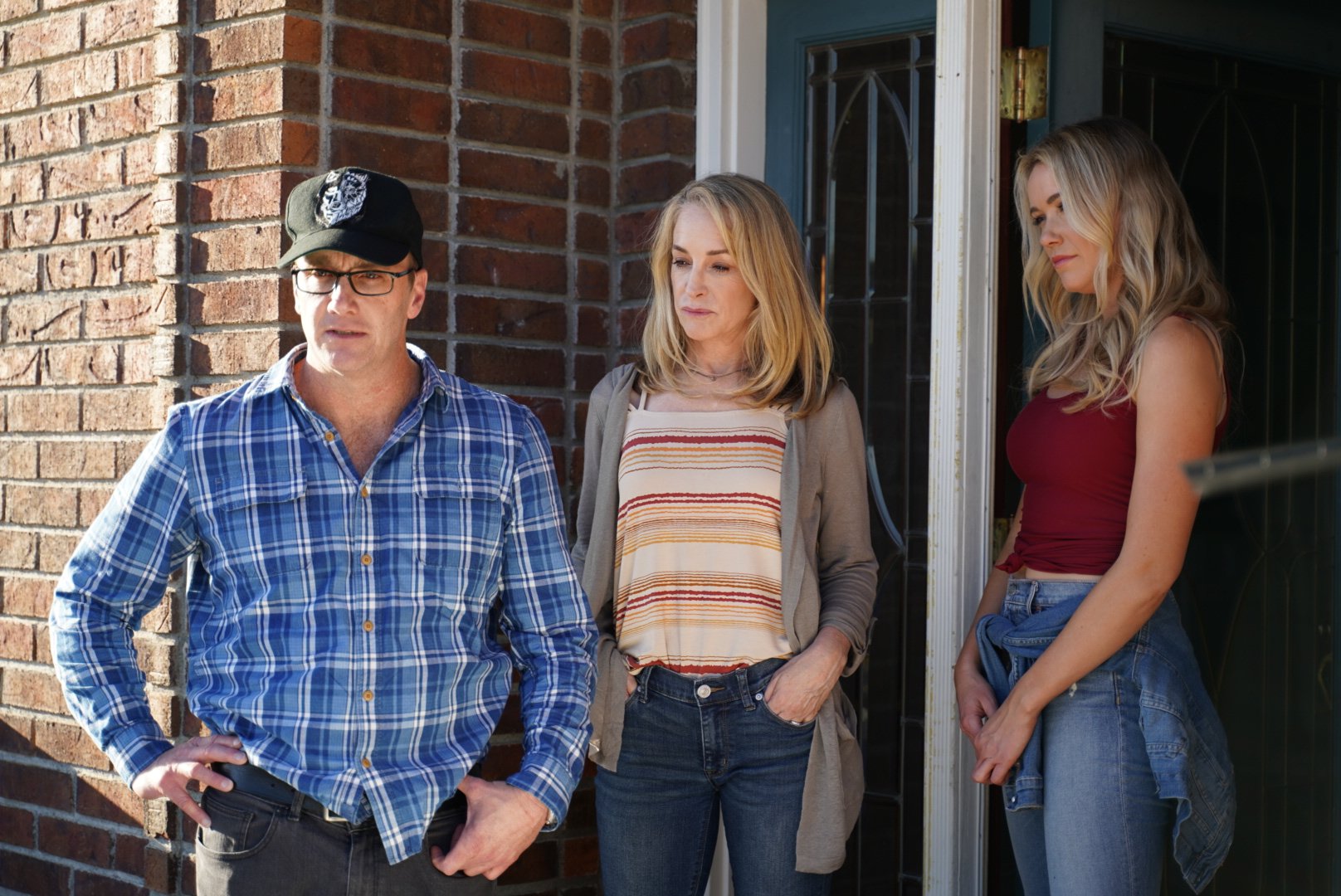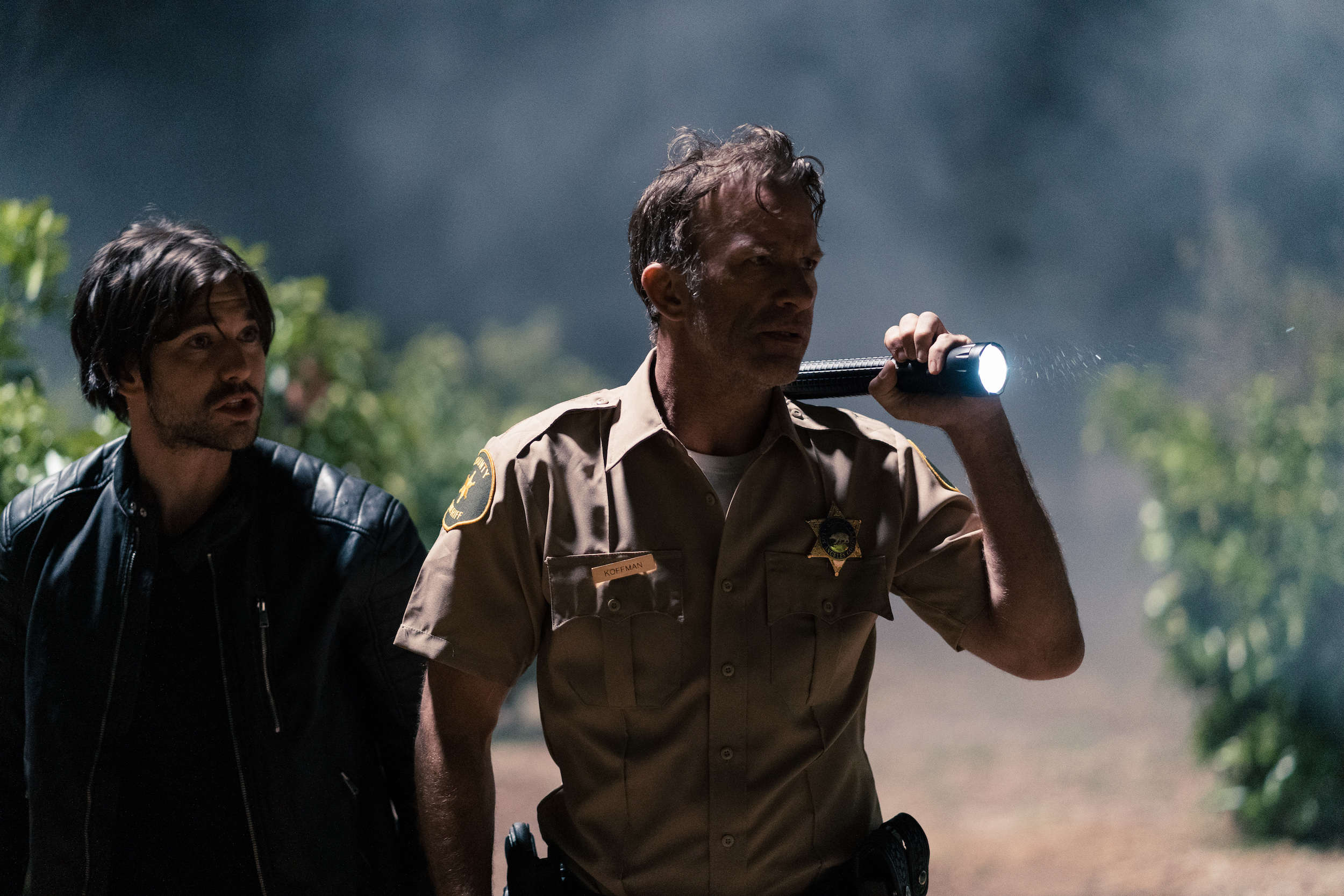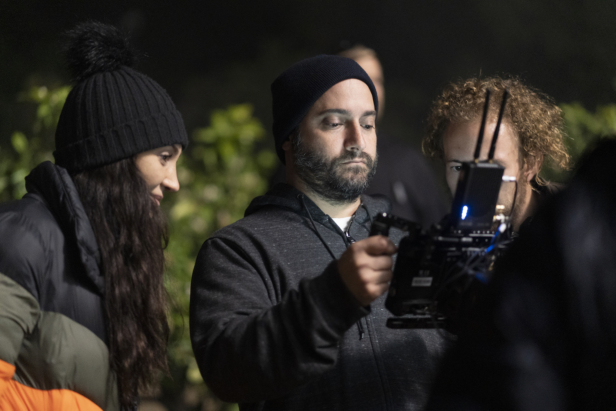Hunter’s Moon follows three girls who throw a party in their new country home when their parents leave town. After a group of dangerous local boys with bad intentions show up, the women are forced to defend themselves from a predator, as well as a mysterious evil lurking in the orchard outside!
Fusing horror with comedy, the film features Thomas Jane (The Punisher, Deep Blue Sea), Sean Patrick Flanery (TV’s Dexter, The Boondock Saints), Katrina Bowden (TV’s 30 Rock, The Bold and the Beautiful), Jay Mohr (Hollow Point, Jerry Maguire) Amanda Wyss (A Nightmare on Elm Street, TV’s Highlander) and David Labrava (TV’s Sons of Anarchy, Mayans M.C.).
Hunter’s Moon’s director, producer and writer, Michael Caissie, tells us more…
How did Hunter’s Moon come to be?
It’s an interesting story. At the time, I was running restaurants in Los Angeles and I opened up a restaurant in Orange County, working ridiculous hours, sometimes 80-90 hour weeks. I said to my wife I was barely seeing the family, or doing any writing anymore, which was a real shame. However, my script for Hangman had at least been optioned and it seemed like it was getting ready to pop. So, we decided to take a leap of faith and quit the day job.
I devoted the same hours to writing that I had done to my job, so I chain-smoked like a fiend and drank enough coffee to kill a small horse [laughs]. I wrote script after script, doing first drafts in seven days, and out of that process, one of the scripts was Hunter’s Moon which was originally called ‘The Orchard’.
Where did the idea come from?
Hunter’s Moon is a female empowerment movie. I was raised predominantly by my mother and grandmother and all the women I know are strong, interesting and three dimensional so it’s something I try to bring to my writing. I don’t like seeing weak or poorly developed women on screen, and I certainly don’t want to be responsible for films like that.
I usually come with a concept and a twist, and then work backwards to develop the story and how we get there. About halfway through, I outline the rest of the script. After finishing Hunter’s Moon, I took a step back, looked at it again and thought it was interesting and fun.
This is your feature directorial debut. Was it always the plan to direct it?
I originally wrote it to try and sell it. My manager, Christopher Sherman, who is also a producer on the film, took it and ran with it. I’d been doing a bunch of ghost jobs for directors and one director I worked with said the script was so good, we should put both our names on it, and asked if I had any interest in producing? I said yes! Once Chris heard I was doing that, he suggested I should also direct and put my full energy into it.
At the same time, I had lunch with Arnold Rifkin who is an executive producer, and also did Hangman and Sin Origen, another film I wrote, not to mention 16 Blocks, Tears of the Sun and many other big movies. He’s become a mentor of mine. He asked if I still wanted to direct, and what I could do for a certain dollar amount? On top of that, he had financier interested in first-time directors, so it was a perfect storm. We were chasing cast and I had become friends with Jay Mohr, who came onboard too. Interestingly, every actor that read it seemed to like the material.
After about six months of not being able to get the full financing in place, the producers Clayton Turnage, Chris and I decided to just do it ourselves, knowing it would be twice as hard, but we could do it our way. The push back we kept on getting was that I was a first-time director, but we were still able to get some financing and get going.

How did filming start, and what was the experience?
We went to Kentucky to begin filming. Originally, we started shooting in 2017 and wanted to shoot as much as we could with the money we had, with a plan to cut a pitch trailer and show the production value. I felt like I knew what I was doing and that the label ‘first time director’ is just a phrase. In that process we also ended up re-casting the sheriff role and when we completely finished filming, the majority of the scenes had been re-shot and we finished in Los Angeles.
I lived with the film for about three years overall. Interestingly, the cast got to know each other really well in Kentucky and had grown as a family unit, so it helped the film in a strange way. I think it was especially good for Jay Mohr and Amanda Wyss playing mom and dad, and they became close with Katrina Bowden, Emmalee Parker and India Ennenga who play their daughters. Although there were bumps and bruises in getting it made, I don’t think those relationships would come across the same way onscreen if we’d shot it over a shorter space of time.
Being a writer, director and producer, how was that mash-up of roles and was there any conflict?
One thing I noticed pretty quickly was that some things work on the page but the moment you’re on set, it doesn’t always make sense. My background in terms of performance is in theatre, so I like to collaborate. I was blessed with great actors on this so, once my director’s hat is on, I’m not married to anything in the script in terms of dialogue, so long as the general direction remains the same. I wanted the actors to make each part their own.
As a producer, there were limitations, and time was definitely one. It was tough in terms of coverage, but I was blessed with two great directors of photography, Ben Kufrin and Edd Lukas. I also worked with Ben on a TV show called Nova Vita with Dean Norris and Titus Welliver, so we had a great collaborative process. On Hunter’s Moon, we went into certain scenes knowing it would be a quick two-shot, in and out, and then we had to move on. Clay, one of our producers, has a first AD background so he helped us balance the demands of the schedule with what we could realistically do. I never pretend to know everything, and I like surrounding myself with people who know more than me.
What was the most challenging day or experience on the film?
The most challenging time was the first night working with Thomas Jane because he had been away and was delayed flying back in stormy weather, so the poor guy was stuck at the airport. He was pretty late on the first night of shooting, so I had the stress of having this famous actor, who I really admire and who’s an integral part of the movie, arriving late having endured a horrible journey. After that ordeal, he had to get on set, get into character but he was a consummate professional and ready to go. Once he was there, everything went really well and smoothly.
Even when there’s a feeling of exhaustion – and this happened a lot during Hunter’s Moon, shooting long days and nights – I would leave the set each day with a real sense of appreciation. I’d be reflecting on what we did and realising we’re creating something, from my writer’s voice to finding my director’s voice and everyone bringing their unique skills to the movie. I felt fortunate to be doing it.

The werewolf, when he does appear, looks quite retro and it doesn’t rely on CGI. What was the inspiration behind the creature?
It’s funny that as a writer and director, I didn’t want to push the werewolf too much, it’s intended as a more subtle point in the film, but of course the marketing pushes the werewolf and makes it a focal point!
The biggest inspiration for the werewolf was Jaws. I didn’t want to show much of the creature, which I know was a workaround for them since they didn’t want to show their mechanical shark too much. That strategy turned out to be so iconic and, while I’m obviously not comparing my movie to Jaws, I really loved using that idea to build tension.
I talked to Vincent J. Guastini, our effects creator, as we wanted to build something practical that also looked a little old school. He did some sketches and told me about this stunt performer called Lucky who walks on stilts. So, we had him in the movie wearing the suit and the werewolf stands about 9 feet tall! It’s an important part of the film but, to me, this isn’t a werewolf movie, it’s a character piece that has a werewolf in it.
We have to ask about this! You co-wrote Hangman starring Al Pacino…
Yeah, I wrote the script with Charles Huttinger who is a good friend and we’ve written a bunch of scripts together. Charles came up with the concept years ago and we originally wrote it as a found footage movie. It was optioned by producer Arnold Rifkin and, in the process of doing re-writes and getting a director attached, the found footage concept went.
At one point, John Travolta was supposed to play the lead. Pete Travis, the director of Vantage Point and Dredd, was potentially going to direct, and it went through many variations. One time, it even seemed like it might not happen. Then Al Pacino got involved, there were some last-minute re-writes, Johnny Martin came on as director and he’s a great friend. He also had a very specific vision for the film and was gracious in letting me be involved in that process bringing it to the screen.
Writing an Al Pacino film, I still don’t think my feet have touched the ground. He also helped shape certain dialogue. There’s a big confrontation scene at the end and Al put in a lot of work making sure it popped. He’s meticulous about everything around him, even the smallest character who walks on for a minute, he wants to know their backstory and how it relates to what’s happening in this scene, so he’s immersed in the process. It was a great experience and it taught me a lot about creating dialogue. He’s such a gracious human being, plus he’s funny, witty and of course a great actor.
What’s next for you?
Right when the pandemic hit, I was in Armenia filming a TV show called Purgatory with Clayton Turnage who was also a producer on Hunter’s Moon. I wrote 16 episodes and was co-directing but we had to stop half-way, so we’ve turned it into two seasons of eight episodes and filmed enough to get our initial eight episodes out. We’ll go back later to finish Season Two.
The first season of Purgatory is streaming now on Popstar! TV which is available online and on Apple TV and Amazon Fire TV Stick. When I got back, first I had to self-quarantine for my family. I wanted to do lots of writing, which didn’t exactly happen, but I ended up working with the editor of Purgatory back in Armenia, so we were exchanging notes. I’m also developing future projects to work on once it’s safe to do so.
A script I wrote prior to Hunter’s Moon also got bought and made into a movie called Sin Origen and translated into Spanish. Rigoberto Castañeda is a fantastic horror director from Mexico and that’s supposed to be coming out in a few months. That one’s about vampires and Hunter’s Moon is obviously about werewolves, so I wanted to take some familiar, dare I say clichéd aspects, and flip the formula on its head.
What do you hope audiences take away from Hunter’s Moon?
I set out to make a fun movie and the cast really brought that to life. I think we live in a culture now where so many people have an expectation of what things should be like and are quick to tear everything down if they don’t like it. All we tried to do was create something fun, albeit with a limited budget and a great cast. I see it as being similar to a good episode of The Twilight Zone. That inspired me a lot as a kid, and Stephen King is a huge influence too. I think a lot of those elements are infused into my writing. So, I hope audiences enjoy the ride!
Dazzler Media presents Hunter’s Moon on DVD and Digital Download from 24 August.
